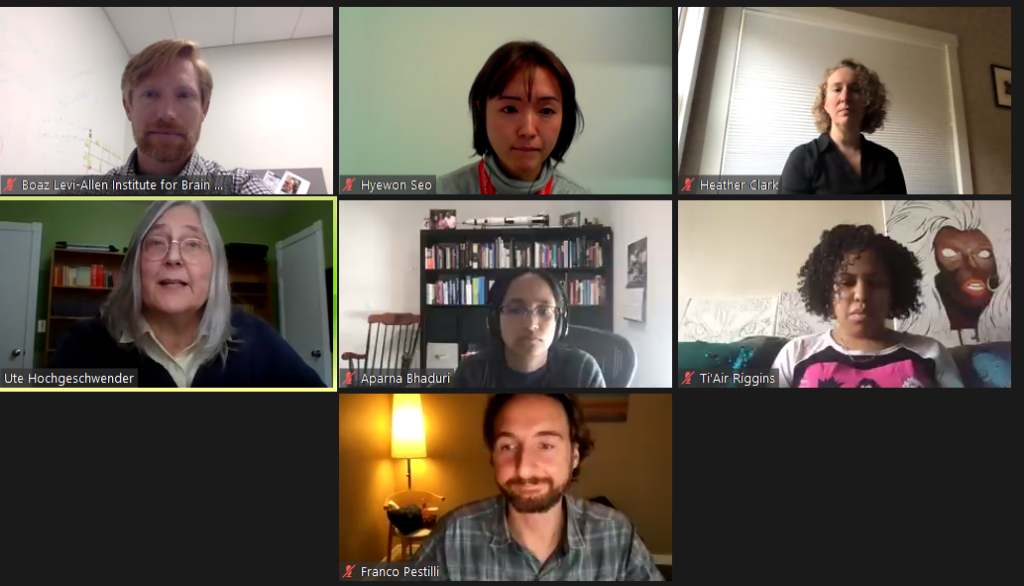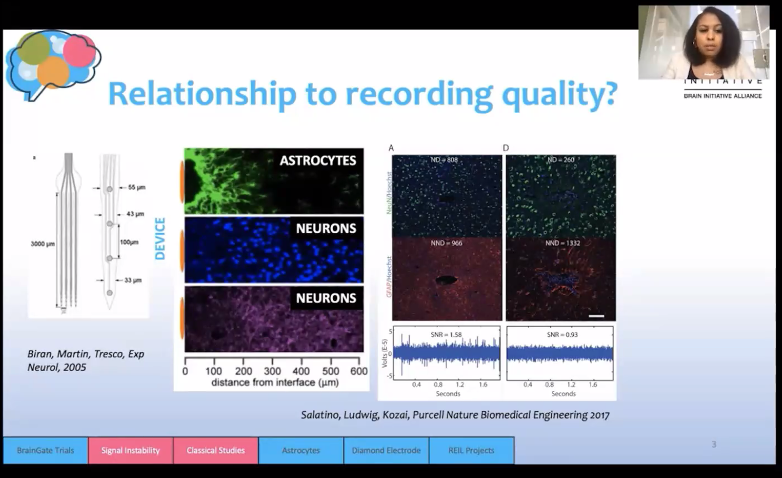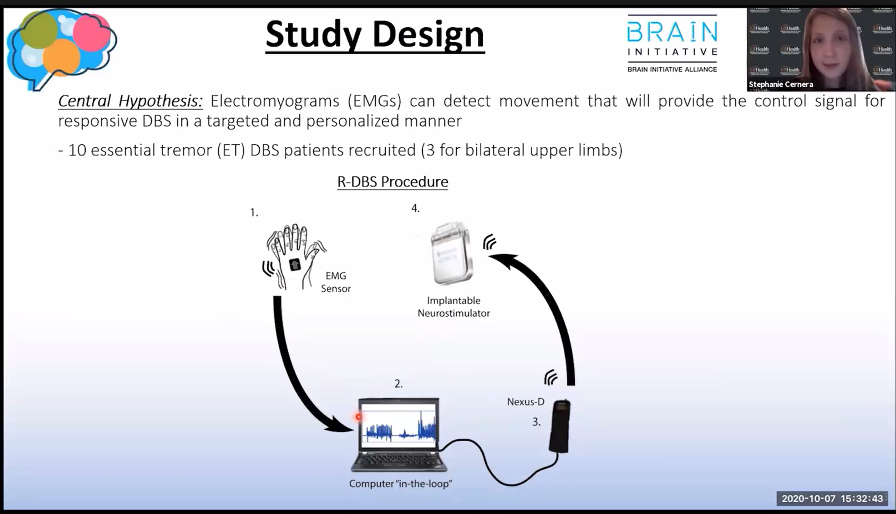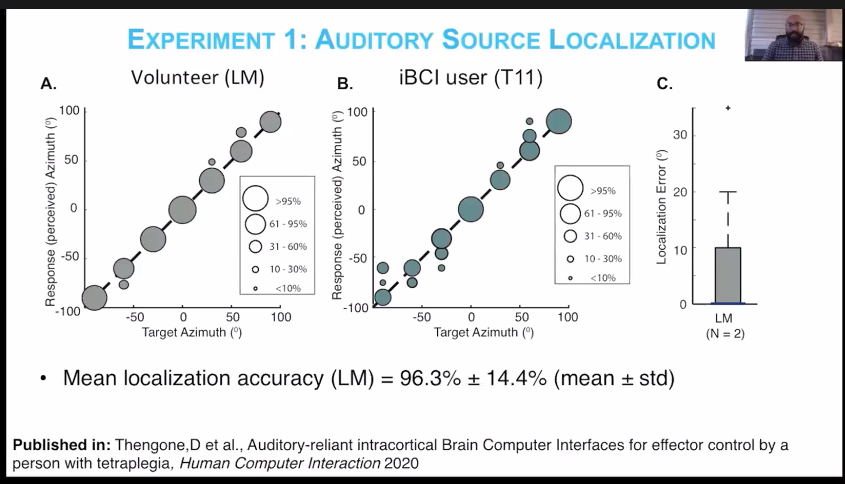Neuroscience doesn’t only happen in the laboratory; it also happens at conferences. Academic meetings present many diverse opportunities for collaboration, networking, and professional development. At the same time, most workshops are expensive to put on, require time away from home, and leave a hefty carbon footprint on the environment. Further, in the wake of COVID-19, in-person conferences present too great a risk to the health of attendees. For this reason, virtual events have become a popular way to facilitate talks, discussions, and professional development. One such event that took place from October 26-28 was Neuromatch 3.0.

Neuromatch is a conference aimed to create a better online experience by making programming more open and democratic. In the opening remarks of Neuromatch 3.0, Dr. Konrad Kording described the mission of Neuromatch, noting conferences should be financially accessible, “all identities should be welcome,” and Neuromatch “believes in bringing scientists together”. Neuromatch has hosted several events already this year, but the most comprehensive of these was the recent Neuromatch 3.0 (See talks on demand). People all across the world have been participating in these events, including BRAIN Initiative® investigators. The BRAIN Initiative Alliance (BIA) collaborated with Neuromatch 3.0 to host a Town Hall and a three-part series in order to highlight cutting-edge tools (probes, optics, cellular, molecular), technology (software and hardware), and theories (modeling, computation and theory) emerging from BRAIN Initiative efforts within the United States. Like many of the Neuromatch 3.0 events, this three-part series put a special spotlight on the trainees involved with BRAIN Initiative research.
During the Town Hall, Dr. Konrad Kording moderated a discussion by leaders within the BRAIN Initiative Alliance. Drs. Michelle Elekonich from the National Science Foundation (NSF), David Markowitz from the Intelligence Advanced Research Projects Activity (IARPA), Caroline Montojo from the Kavli Foundation, John Ngai from the National Institutes of Health (NIH), and Alyssa Picchini Schaffer from the Simons Foundation contributed. The future of neuroscience funding was a hot topic during this session. Dr. Montojo said, “We invite scientists to think big,” at the Kavli Foundation. As the discussion came to a close, Dr. Ngai commented that there has been “a breathtaking development of tools and technologies in the last few years.”
Following the BIA Town Hall, those tools and technologies were highlighted via the three-part series that broadcasted short, pre-recorded talks from BRAIN investigators. Each session included a panel discussion with questions fielded from the Neuromatch attendees.

Tools: Moderated by Dr. Ute Hochgeschwender from Central Michigan University, the speakers for the first session ranged from students to senior investigators. Dr. Aparna Bhaduri is a postdoc transitioning to a faculty position at the University of California Los Angeles through a BRAIN K99. Her research has focused primarily on the lipid profiles of different cell types. Another trainee, postdoc Dr. Hyewon Seo, presented her and Dr. Heather Clark’s work on magnetic resonance imaging (MRI) for biological applications. Assistant Investigator in Applied Genomics at the Allen Institute for Brain Science, Dr. Boaz Levi, discussed his vision for a new suite of genetic tools to interrogate the role of cell types across species. Doctoral student Ti’Air Riggins from Michigan State University gave the final presentation on astrocyte reactivity to diamond-based electrodes. During the panel discussion, Dr. Franco Pestilli explained that on brainlife, his lab’s free cloud-based platform for neuroscience research, you can keep your dataset private or public.

Technology: In the second installment of this series, the discussion turned from tools to technology (such as software and hardware). This day also focused heavily on trainees’ contributions. With Dr. Jacob Robinson from Rice University as the moderator, the session kicked off with PhD student Stephanie Cernera from the University of Florida, who explained her work with closed-loop deep brain stimulation systems. With the assistance of senior researcher, Dr. Kee Scholten, Dr. Ellis Meng from the University of Southern California presented their work developing polymer electrode arrays through the Polymer Implantable Electrode (PIE) Foundry. Doctoral student Alexander Riordan from Princeton University presented compelling data on deep-brain connectomics in grid cells using a variety of technological approaches, such as calcium imaging and virtual reality. From the lab of Dr. Sam Sober at Emory University, postdoctoral researcher Dr. Bryce Chung and Dr. Muneeb Zia (a research engineer from the Georgia Institute of Technology) described their advances in multi-electrode arrays for single unit recordings. Another postdoctoral scholar, Dr. Taylor Webb from the University of Utah, gave the final presentation of the day on his work using a non-invasive, deep brain approach to understand focal neuromodulation in a nonhuman primate model.

Theory: The third and final session of the BRAIN Initiative Alliance series during Neuromatch 3.0 focused on the theory of neurotechnology (modeling, computation). This session was moderated by Dr. Elizabeth Buffalo from the University of Washington. First up was Case Western Reserve University’s Dr. Insoo Hyun, the primary investigator of The Brainstorm Project. His talk focused on human brain organoids and the ethics in bioengineering that accompany this research area. The next talk was given by data scientist Dr. Jeremy Magland from the Flatiron Institute and Simons Foundation. He described the SpikeForest platform, where users can find an open source python package for spike sorting electrophysiological data. Next, postdoctoral researcher Dr. Stephanie Noble from Yale University described her work at the intersection of neuroimaging, statistics, and computational neuroscience. Her talk focused on the Constrained Network-Based Statistic and how this new level of inference is circumventing the current limitations of statistics. The following speaker, Dr. Sridevi Sarma, a professor at Johns Hopkins University, talked about dynamical systems modeling approaches during a grasp task in nonhuman primates. Finally, the series ended with a talk from postdoctoral researcher Dr. Daniel Thengone from Brown University. He explained a feedback-based, brain-computer interface in the context of severe motor impairment.
Altogether, this three-part series highlighted an inspirational lineup of rising stars and outstanding experts in the field of neurotechnology. From tools to technology and theory, the new advances from the BRAIN Initiative are pushing the field of neuroscience further and virtual events like Neuromatch 3.0 are opening doors for researchers to stay connected during these trying times.

